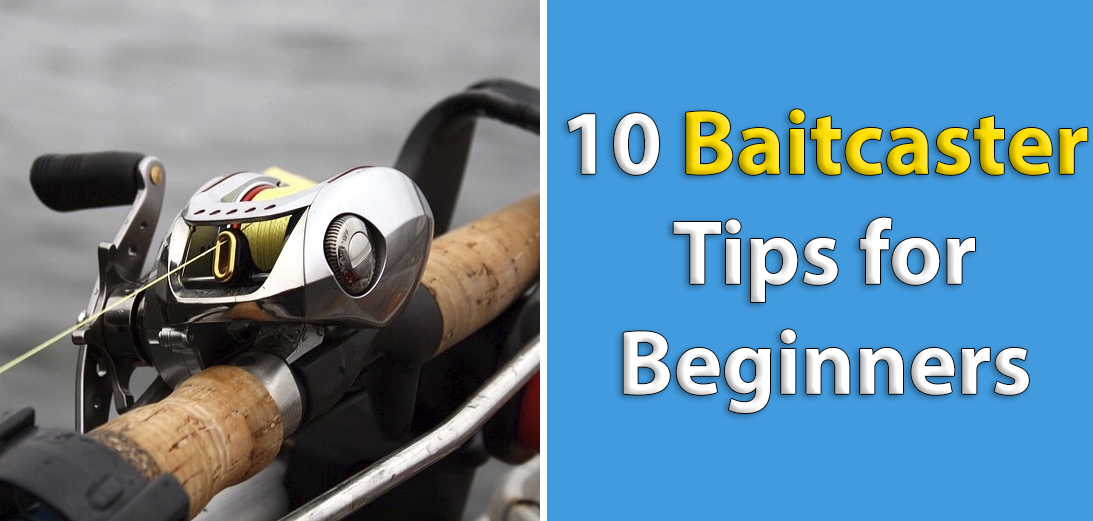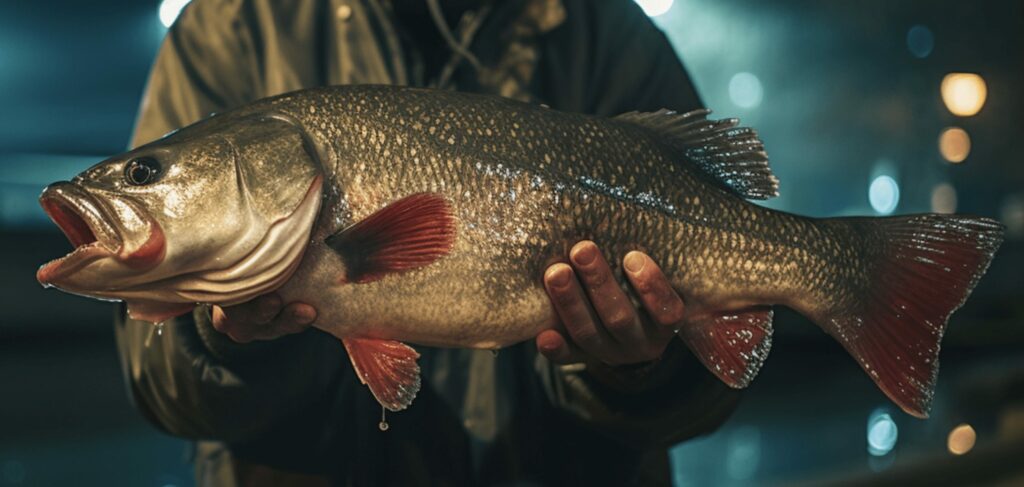Baitcasting reels are known around the fishing community for being a bit more challenging to handle when compared to regular spinning reels. This is why most rookie fishers decide to keep using their trusty spinning reels.
However, there are clear advantages for using baitcasting reels as they:
- are very compact and lightweight (30% to 50% lighter than spinning reels, and weigh around 5 pounds) which makes them perfect for fishers who spend all day long casting, casting, and casting
- provide superior distance control as one can easily regulate the spool speed with the thumb, gradually letting the lure fall right where intended (which is perfect for serious bass fishing)
- offer better line capacity which is great for fishing in long distances (i.e. bluewater fishing)
- deliver superior drag (18lbs to 30lbs of drag) for catching heavy fishes
- come with a line clicker that makes that sweet clicking noise when a fish catches the lure and drags the fishing line
Due to these many advantages, I’ve decided to write a quick article on some tips to make the transitioning to using baitcasters easier for beginners. Furthermore, the main focus of this article will be sharing tips to learn how to cast a baitcaster without birdnesting the reel. Let’s begin.
10 Baitcaster Reel Tips for Beginners
These are the tips I think are essential for those fishers first starting to use baitcasting reels. To be honest, I wish someone had shared some of them with me when I first started to use baitcasting fishing reels, it definitely would have saved me a lot of frustrations.
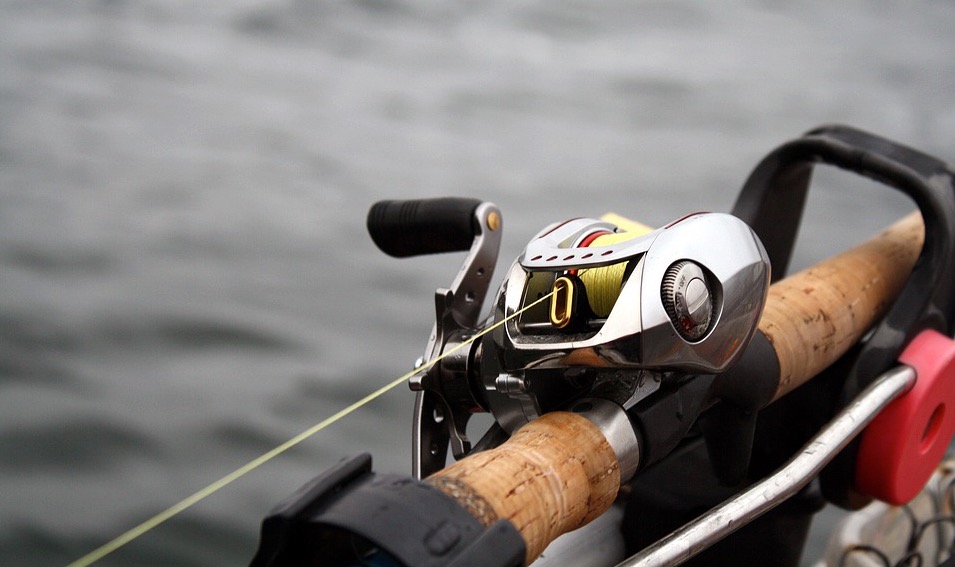
Tip #1: You Need to Know How to Use a Spinning Reel
If you start fishing with a baitcaster without prior preparation, things are not gonna end up well for you. You might even end up hating fishing (which is what we intend to avoid with this article).
Baitcasters require some previous experience to be properly managed, which is why I’d tell you that if you bought a baitcaster without having first fished with a regular spinning reel, then you might be better off putting it aside and spending a few extra dollars on a cheap spinning reel and start your fishing journey there.
That wat you’ll learn the basics of fishing with an easy-to-operate reel and then you’ll be able to level up to catching fish with a baitcaster.
Tip #2: Use a Heavy Fishing Line
To make sure the lure doesn’t travel faster than the spool after casting (to avoid backslashing) a good recommendation is to use a fishing line that’s on the heavier side.
I always recommend beginners to get a line in the 15 to 18lb. test range. That way, one has the guarantee the lure isn’t gonna travel faster than the spool as the larger diameter of the line is going to make the release of the spool a bit more difficult. As a result, one has more time to work on the casting and thumb-braking techniques.
Furthermore, I’d say getting a monofilament line is better for the beginner that’s just first starting to fish with a baitcasting reel as it:
- is much cheaper than other fishing lines
- stands as a very durable fishing line (you get more band for the buck)
- is easier to work with for the rookie fisherman
Tip #3: Take Advantage of the Magnetic Drag
Around 5 to 7 years ago, baitcasters started coming with these new things called “Magnetic drag dials”. These new features are none other than dials that let fishermen regulate the speed at which the spool spins to prevent backslashing. They are commonly situated on the opposite side of the reel’s handle.
Specifically, the magnetic drag regulates the speed at which the spool starts to spin. If you have your baitcasting reel’s magnetic drag set to the highest setting and you’d release the spool free (which you can do very easily with a baitcaster), you’d see how the spool wouldn’t spin and the lure would not fall. This happens because the drag puts maximum resistance on the spool preventing it from spinning.
As you may already imagine, it’s a very handy feature for beginners making their first steps into fishing with baitcasting reels as it’s essential to prevent the spool from over-running.
To beginners, I’d recommend setting their reels’ magnetic drag to the highest setting and slowly working down from there. All the while, one should keep the thumb feeling the spool to get used to it. This is going to substantially reduce the distance to which the lure travels but it will gradually let one get used to regulating the spool speed only with the thumb, which is the end goal as this is what lets one take advantage of maximum control on where the lure falls.
Tip #4: Start Slowly
Apart from the magnetic drag, baitcasting reels come with solid braking systems. What a braking system does is regulating how the lure stops its traveling speed (which is why it’s called braking). Usually, these systems have dials one can use to select a braking level wanted (usually ranging from 1 to 8).
I’d recommend beginners to start with the highest braking setting possible and start casting right away to get used to the feeling of how the spool spins and how fast the lure travels without the risk of over-running the spool.
The ideal situation would be to gradually reduce the braking levels to finally end up casting the lure with the spool spinning freely without anything regulating its speed other than the thumb (which is going to give maximum distance control).
Tip #5: The Perfect Trick to Start
As we said previously, a great tip for beginners is to start casting with the help of a solid braking system to stop the baitcaster’s spool from over-running. However, if you’re not comfortable with setting the braking system to its highest setting, there’s another tip that might help you in finding the perfect braking level for you.
Holding the fishing rod sideways, with the lure hooked to the line, set the braking system to the level you think it’s best for you. If the lure falls gradually to the ground, that means the baitcaster won’t suffer backslashing during casting. However, if the lure falls down too quickly, then that might mean the spool will over-run when in use. For those cases, adjusting the braking dial to a stronger level might be the best choice for beginners.
Tip #6: Never Go with Break Level 0
This is a very common mistake I see among fishermen taking their first steps into fishing with baitcasting reels.
With the ambition to have total control of the spool, rookies set the assisted braking levels to 0. As a consequence, when casting the baitcaster gets all tangled up with a severe case of birdnest due to severe over-running of the spool, which is not funny at all when it happens.
This is a perfect representation of why baitcasters are tricky for beginners.
If you set the braking level to 0 there’s no way you’ll be able to regulate the spool with your thumb only. My recommendation is to go for a braking level of 1 or 2, and that’s if you are an experienced fisherman with vast experience fishing with baitcasting reels. Otherwise, you’ll be better off by setting the braking dial to 5 or 6.
Tip #7: Set the Baitcaster Per Lure
Each lure has specific dimensions and weight which substantially influence the speed at which the lure travels. In consequence, it’s very important to adapt the reel’s braking system and magnetic drag for each lure to avoid backslashing.
If you don’t do this you’ll quickly find that the braking setting and magnetic drag that works perfectly for one lure is awful for preventing backslashing for another lure.
In short, you either use always the same lure or you make sure to write down the reel’s braking level and magnetic drag you are most comfortable with for each lure.
Tip #8: Control the Spool Speed with the Thumb (The End Goal)
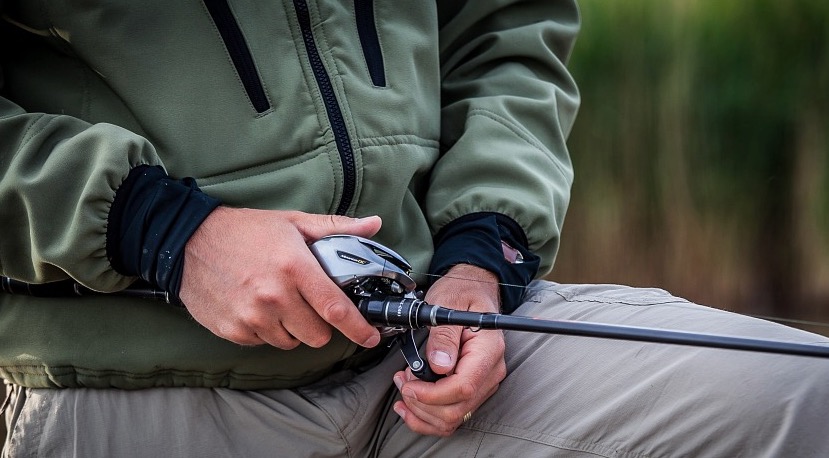
I know the features as the braking system and magnetic drag sound great, especially if you’re a beginner.
But, the whole idea of using a baitcaster is having maximum control over the distance the lure travels before hitting water. And, to get to that level of control one has to get rid of all assisted spool braking attributes and only break with the thumb.
To achieve this, beginners should start with higher levels of assisted braking and magnetic drag, but then, gradually reduce them over the following weeks/months. Additionally, as the braking system and magnetic drag are minimized one must make an effort to start braking with the thumb.
If you do this, you’ll be perfectly controlling the spool with minimum assisted braking while using the thumb to regulate how far the lure is gonna go, which is a freeing experience for all fishermen. Mark my words.
Tip #9: Hold the Fishing Rod Sideways When Casting While Feeling the Spool
This is a very handy trick most rookie fishermen don’t know about.
You just need to hold your fishing rod sideways and cast the lure while resting your thumb on the free-moving spool. Doing this, you’ll slightly reduce the speed at which the lure is traveling making sure there’s no chance of backslashing.
However, if the lure IS traveling faster, then you’ll be able to slow it down with your thumb. So, it’s a win-win situation.
Tip #10: Work on the Cast Timing (Practice, Practice, Practice)
One must master the casting in order to achieve maximum control of the distance the lure travels before hitting water.
To do this, one must practice over, and over, and over again, especially the timing and the casting technique.
There’s a tip I can share with you if you want to make this process a bit faster though. Wanna hear about it?
First, you should practice a few times the full casting motion without actually releasing the lure to adjust your brain to it. Once you have it down, start the casting motion and release the lure exactly in the middle of the casting movement. Once the lure is flying, make sure to rest your thumb on the spool to make sure the lure isn’t traveling faster than the spool is spinning.
The first few times you’ll send the lure too far and sometimes it’ll fall too short. Your focus should be on the technique and timing. Once you start doing it over and over again, you’ll quickly see how your control of the lure gets gradually better. Trust me. Just take your time.
Baitcasting Reels vs Spinning Reels
There’s a lot of confusion about the differences between a baitcaster and a spinning reel. That’s why I wrote a quick comparison between the two.
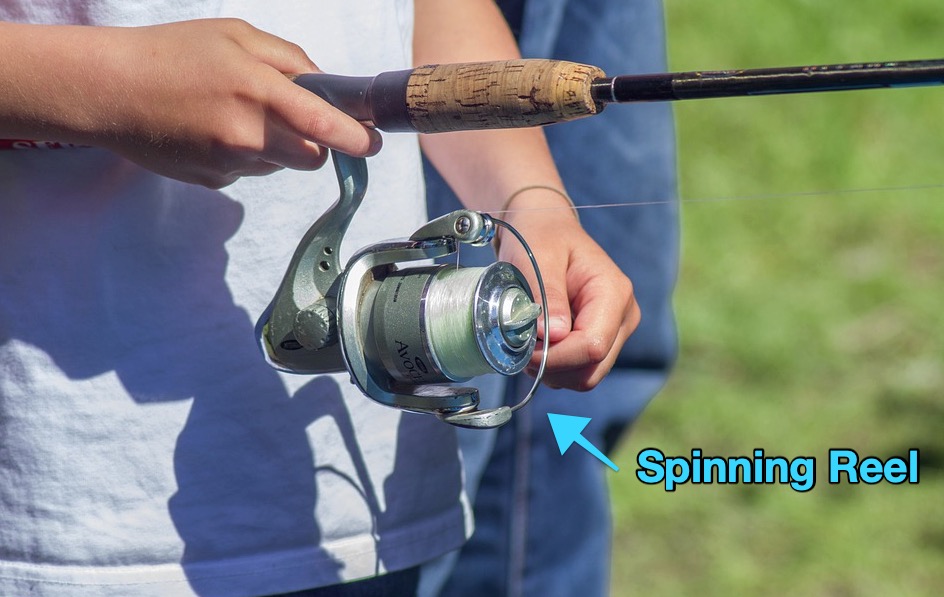
Weight
Baitcasting reels are lighter than spinning reels. In fact, it’s a known fact that baitcasters have 30% to 50% less weight than spinning reels. This, of course, is essential for fishermen used to spend the entire day casting lures.
Price
Well, this is a serious disadvantage to baitcasters.
Given their expensive components, baitcasters tend to be at least 50% more expensive than regular spinning reels. But there’s a reasoning behind this. I mean, baitcasters have:
- lighter materials (i.e. carbon fiber) which are more expensive
- additional components (i.e. automatic breaks that regulate the spool speed to prevent backslashing)
- complex internal mechanisms that allow these reels to provide more drag power
Complexity
Baitcaster are, by far, more complex to use than regular spinning reels.
Baitcasters, on the other hand, require you to be more attentive when casting the lure. You have to regulate the spool speed to make sure the lure hits the water in the right spot. And, the way of holding the rod and spinning the reel is totally different from the way you do it with a regular spinning reel.
In fact, a right-handed baitcasting reel means you reel with the right hand, it doesn’t mean you hold the rod with the right hand (which is very confusing if you’ve been used to handling regular spinning reels).
Backslashing
Sometimes when casting the lure, the baitcaster’s spool goes faster than the lure and the lines get all jammed up in the reel, producing the so-called “backslash”.
This is very inconvenient and frustrating for beginners used to spinning reels with spools that go up and down with the sole purpose of preventing this issue.
Luckily, some of the more modern baitcasting reels come with automatic breaks intended to slow the spool speed to keep it from giving more line than it’s necessary which completely solves this backslashing issue. In my case, I like to regulate the spool speed with my thumb as it gives me more control over where the lure lands.
Line Capacity
This is where baitcasters shine.
Given their more resistant and lighter internal components, baitcasting reels can hold three times (and sometimes four times) the fishing line regular spinning reels can hold without adding extra weight.
This is essential for fishermen that fish in serious distances (i.e. bluewater fishing) who don’t want to hold a heavier fishing rod.
Position
Baitcasters are positioned on top of the fishing rod, while regular spinning reels are situated on the bottom.
Unfortunately, this stands as another inconvenience for beginners trying to learn how to fish with a baitcasting reel, as it’s, yet again, another difference to get adapted to.
My Advice
If you’re just getting into fishing, there’s no question about it, you’re gonna be better with a spinning reel. They’re cheaper and easier to use. The learning curve with a baitcaster is much more stepper for a beginner.
However, if you’ve got a couple of years of fishing experience in your belt and you are interested in the specific advantages a baitcaster brings to the table (i.e. the compactness, distance control, line capacity, solid drag strength) then you might be ready for learning how to fish with a baitcaster.


